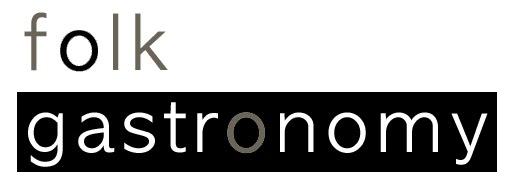[image: wikipedia]
prohibitive consumption- extant judiciaries of proscriptive eating, modifiers in the syntax of cuisine, and edible dossiers of epicurean wisdom and whimsy throughout history. intricately interwoven into the table settings of most cultures, food taboos trace their phylogenies to a number of sources. far from being the great faits accomplis of any culture's epicurean vernacular, though, food taboos do deliver an interesting discourse on resource partitioning, sanctity of life, spirituality, toxicity, and group identity and cohesion, all within their unique contexts of colloquial, creole cybernetics and asking questions like, how do these restrictions persist in culture?
contemporary and novel food taboos reach into genetics with GM crops, zoonostic phobias with h1n1 as well as foot and mouth, ubiqituous distribution networks, securing market share with food lobbyists, a sort of combative and preventative eugenics with iodized salts in some muslim communities, as well as energy production with the toxicity of chernobyl- sometimes with a breadth reaching a pandemic level of restriction.
the curious, insidious nature of the effects from the chernobyl disaster has spawned a number of regional food restrictions persisting nearly 25 years later- transient, invisible shepherds of toxic, edible dialects delimiting any national border. the uk food standards agency has over 300 sheep farms still on restriction in areas of wales where contamination levels in sheep meat is over 1000 becquerels of caesium-137 per kilo. the chemical and physical properties of the peaty soil types present in welsh uplands, where radioactivity was deposited, allow the caesium to be passed from soil to grass, grass to sheep. while the number of farms on restriction has declined 95% since the disaster in 1986, the polymorphic nature of the uptake of this isotope, whose half-life is 30 years, is a bizarre, almost anthropomorphic spokesperson for the gamma energies of epigenetic gastronomy- man-made pollen from madame curie's nuclear kitchen.
[image: ravi varma press | part of a hindu pamphlet protesting the practice of beef-eating using the form of gau-mata, within whom the revered sages and elements are believed to dwell. kali, the male demon on the the far right, attempts to slaughter a sacred cow. currently, indian law bans cow slaughter with the exception of the states of west bengal and kerala. this does not mean, however, slaughter doesn't occur illegally. it's estimated that of the 33,000 indian slaughter houses in operation today, 30,000 are doing so illegally- supplanting epicurean cybernetics]
[image: wikipedia | prithu chasing prithvi, who is in the form of a cow. prithu milked the cow to generate crops for humans. prithvi is the hindu earth and mother godess, appearing in art as a woman with four arms and green skin. she also appears in early buddhism]
instances of sanctity of life and resource partitioning are the well-spring from which is born the hindu and ancient persian tradition of reverence towards the domesticated ungulates, cows and bulls- interwoven into ancient vedic cosmogony like spirits lurking in the shadowy corners of cathedrals. the framework within which this restriction exists is ages old and pervasive, preserving the lives of animals integral to the agricultural and nutritional well-being of a people, while lending surface to the ornaments of hindu narrative.
contemporary and novel food taboos reach into genetics with GM crops, zoonostic phobias with h1n1 as well as foot and mouth, ubiqituous distribution networks, securing market share with food lobbyists, a sort of combative and preventative eugenics with iodized salts in some muslim communities, as well as energy production with the toxicity of chernobyl- sometimes with a breadth reaching a pandemic level of restriction.
[image: www.chernobylee.com]
the curious, insidious nature of the effects from the chernobyl disaster has spawned a number of regional food restrictions persisting nearly 25 years later- transient, invisible shepherds of toxic, edible dialects delimiting any national border. the uk food standards agency has over 300 sheep farms still on restriction in areas of wales where contamination levels in sheep meat is over 1000 becquerels of caesium-137 per kilo. the chemical and physical properties of the peaty soil types present in welsh uplands, where radioactivity was deposited, allow the caesium to be passed from soil to grass, grass to sheep. while the number of farms on restriction has declined 95% since the disaster in 1986, the polymorphic nature of the uptake of this isotope, whose half-life is 30 years, is a bizarre, almost anthropomorphic spokesperson for the gamma energies of epigenetic gastronomy- man-made pollen from madame curie's nuclear kitchen.






No comments:
Post a Comment